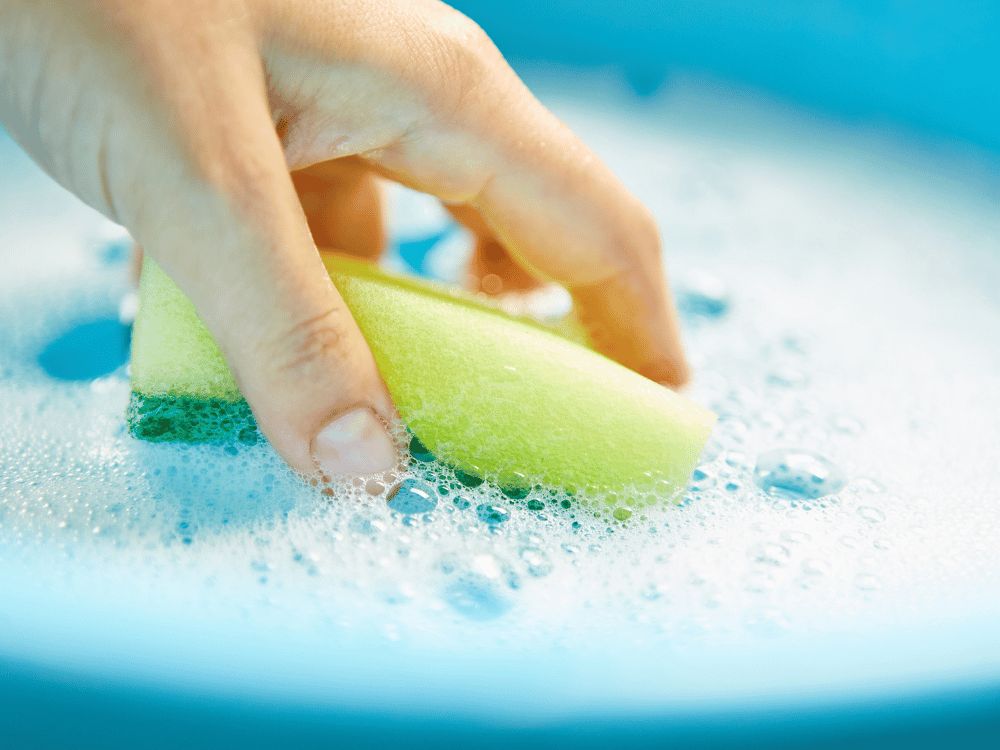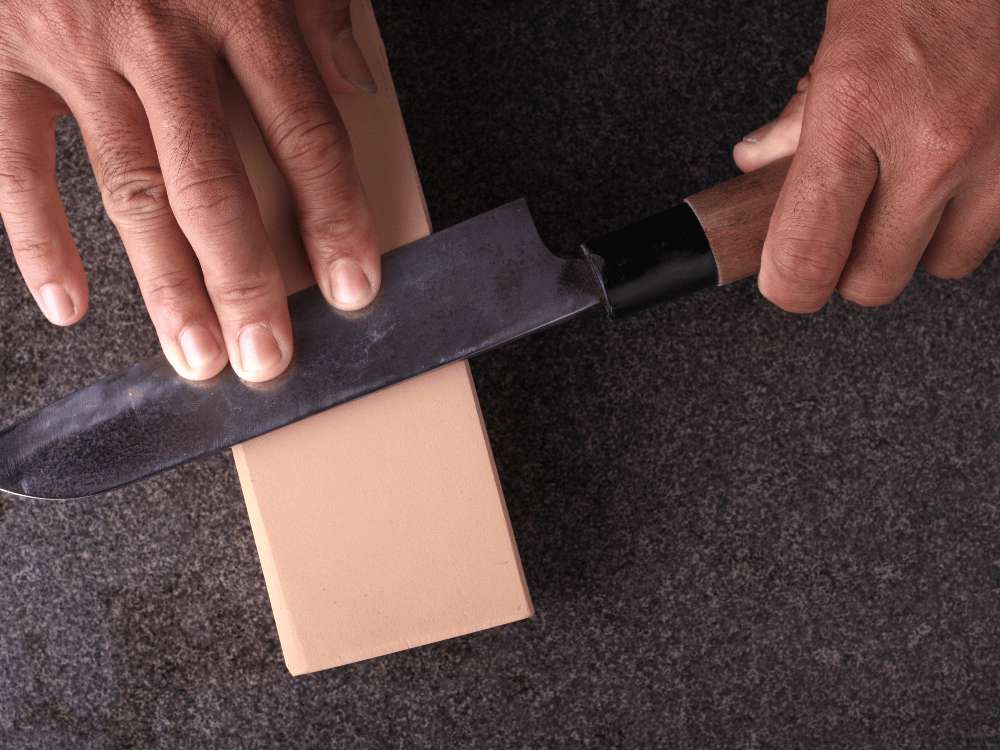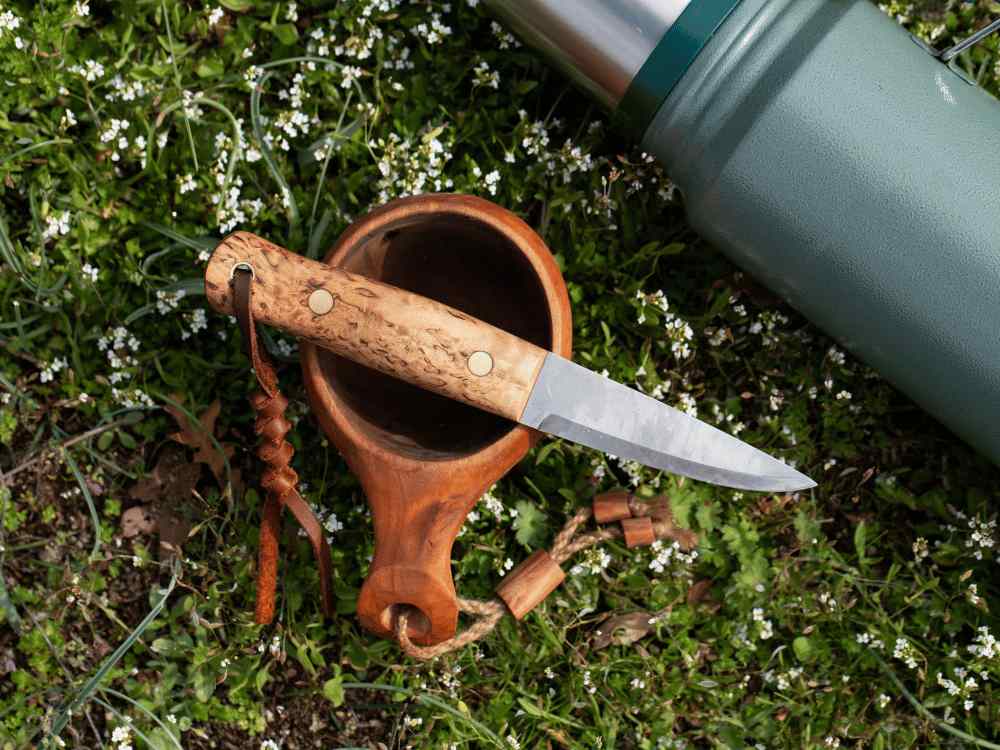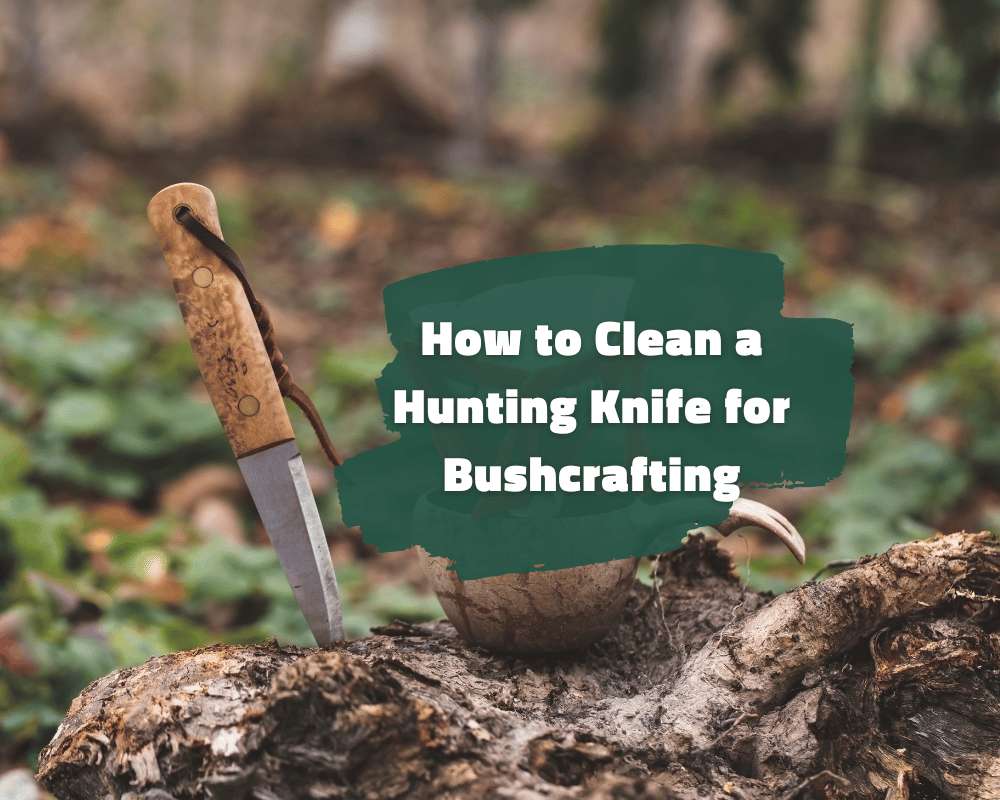The hunting knife is an essential and reliable bushcrafting tool. It can help you carry out a range of tasks, including butchering, field dressing, and other DIY practices. Given its many uses, you’ll need to keep cleaning and maintaining your hunting knife for it to stand the test of time.
Luckily for you, we’ve compiled a professional, step-by-step guide to cleaning a hunting knife. All you’ll need are these items: dishwashing liquid, water, a honing stone or whetstone, a strop, a stropping compound, oil, and some good old-fashioned elbow grease. Let’s get started!
Step 1: Clean with Soapy Water
Start by washing your hunting knife. If you have no dishwashing liquid and no means to warm up water, you can simply clean your knife using fresh water from a nearby water source.

Warning: Don’t use salt water as it will instantly corrode a carbon steel blade.
Rather than using cold water, ideally you’ll have some dishwashing liquid in your cooking kit—and maybe even a Jetboil or other heat source. If this is the case, heat up some water and add some dishwashing liquid until the water turns soapy.
Next, dip your sponge in the water. If you don’t have a synthetic sponge with you, you can use sphagnum moss instead. Take your sponge (or moss), dip it in the soapy water, and use the abrasive part to scrub the areas of rust and dirt on your knife. You may need to apply a fair amount of pressure to get your knife clean.
Warning: Hunting knives are sharp. To prevent cuts and injury, direct the blade away from your body when you’re applying pressure during cleaning.
Step 2: Sharpen the Bevel
Now you’ve cleaned your knife, you need to take steps to protect and maintain the blade. How often you maintain your blade depends on what you’re using your knife for and where, as well as the durability of the materials it’s made out of. A carbon steel knife stored in a leather sheath, for instance, will need regular maintenance to avoid corrosion.

Before you undertake maintenance, make sure that the blade of your hunting knife is completely dry. Next, examine the blade to determine what kind of upkeep your knife will require. Hold the blade up to the light and tilt it slightly to identify any flat spots on the edge, which will reflect light at you. This is an indicator that the blade is slightly rolled—a common sign of wear and tear that you can fix through a process called stropping. Stropping involves polishing the edge of your knife to keep it sharp and effective.
To strop your hunting knife, you’ll need to use leather that matches your knife’s grind. For example, for a Scandi-grind blade with a flat, zero grind, you’ll need a thin, hard piece of leather with a fine grain. If you instead used a thick, soft piece of leather for this kind of blade, the leather would compress as you drag the bevel through—and as a result, your blade would get rounded over time and become less effective.
Tip: If you don’t have a leather strop with you, you can try sourcing materials from the wild such as leptoporus or birch polypore (both are types of fungus). Make sure to dry these out before using them for stropping.
Now that you’ve checked your knife and sourced the right type of leather (or other natural material), you’re ready to start stropping. First, lightly coat the leather with a good amount of stropping compound. Next, place the blade on the leather strop and move through diagonally while making sure to conform to the edge. Remember to push quite hard as you give two strokes on each side. Periodically check the blade to see whether any patches of light remain on the blade edge as you tilt it.
Tip: If you’re worried that you’re using the wrong type of leather or damaging your knife, then try holding the blade to the light to see if any rounding has taken place on the bevel.
As you strop the blade, you’ll notice that the polishing compound will begin to turn gray where it is removing dirt from the blade and small fragments of metal.
If the rolls are more severe, then you will need a honing stone or whetstone to sharpen the blade. We recommend using an older version of the DC4 whetstone or a Spyderco Double Stuff honing stone. The latter also has a long length that is useful for sharpening other tools that you may be carrying, such as an ax.
Before you start sharpening with a honing stone or whetstone, you should first find a flat, stable surface to work on. This might be hard to find in the wilderness, but you can always try cutting some boards out of wood that you find.
Now that you have a flat surface, angle your knife across the honing stone or whetstone, then move the knife in a diagonal motion away from you. Make sure to give even strokes on both sides. When sharpening a hunting knife, you’re listening out for a smooth sound. Repeat this motion until you have a good edge.
Tip: If you don’t have a professional whetstone or honing stone, you can try to find suitable stones out in the wild. Rub two flat stones together to give them a finer grain, then use one of them to sharpen your hunting knife. If you’re bushcrafting somewhere coastal, you might even find a pebble that’s already fine grained enough to serve as your sharpening puck!
Step 3: Add a Protective Coating
To finish the maintenance process, you need to add oil to prevent rust from forming on your blade. We recommend using a food-grade oil, such as olive oil or walnut oil—that way, there’s no risk of you ingesting harmful chemicals when you use your knife to prepare food.

For this final step, simply put some oil on your blade, rub it with your finger, and you’re good to go! Any oil that you have left over in the bottle—if you chose a cooking oil—will serve you well for other purposes, such as frying food, moisturizing your hands, and healing chapped lips.
Tip: For a tasty snack, fry some stinging nettle leaves in the oil—to create a healthy version of potato chips!
…And that’s it! Cleaning and maintaining your hunting knife for bushcrafting can be hard work; however, once you’ve mastered the process, you’ll find that it’s worth it. The more you care for your knife, the longer it’ll last and the more fun you’ll have with it.
I am Bruno. Navigating the urban rush by day, I find peace under the stars by night. Alongside my loyal companion and co-adventurer Lilith, we explore the balance between city life and nature’s embrace. Through writing and films, I delve into bushcraft and the wild’s allure.
GointheWilderness is my bridge between these two realms, guiding you to reconnect with your innate wilderness.
Eden is here and now; join us in rediscovering it.

